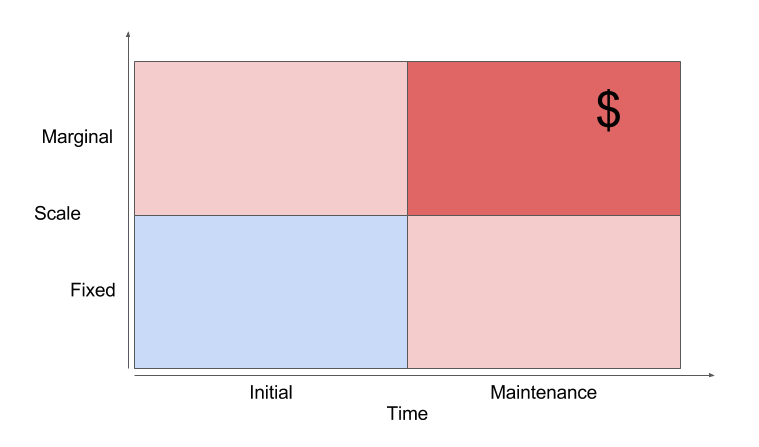Decisions and the long term
When making business decisions, people often use initial or fixed costs to justify their decision. While being difficult to estimate, they still are much easier to estimate than maintenance and marginal costs. However, in the long term, maintenance and marginal costs will outweigh initial and fixed costs, so careful attention must be paid to marginal maintenance costs.

Let’s consider each combination. While a given cost isn’t categorically in one quadrant, these dimensions can be used to conceptualize relative costs of alternatives under consideration.
Fixed initial costs
These are one time costs that are always necessary to take a given path, even in an ideal world.
Marginal initial costs
These are inefficiencies in implementing a decision that are included each time you make similar decisions. Bureaucracy, redundant efforts, and technical debt are three examples.
Fixed maintenance costs
These are the base recurring costs that you must incur as a consequence of your decision. Flat membership or licensing fees are a good example.
Marginal maintenance costs
These are recurring costs that grow proportionally to the number of customers are affected the outcome of your decision. Hiring people or paying for more computers are examples of this. Minimizing these costs has more benefit than reducing the other three types because they are recurring and growing.
See also: The Equation of Software Design
 kms
kms